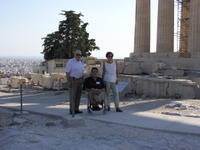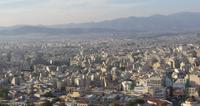About Me

- gerasimos polis
- Γεννήθηκα στον Πειραιά το 1962, σπούδασα Αρχιτεκτονική στο Ε.Μ.Π. και αναζητώ την αλήθεια και μόνο την αλήθεια με όποια μορφή και αν μεταμφιέζεται...
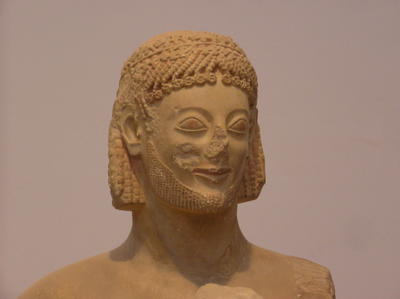
GR: Μέσα στο Μουσείο της Ακρόπολης, είχαμε την ευκαιρία να δούμε αρκετά γλυπτά, πολλά από τα οποία είναι συγκλονιστικό να τα αντικρύζεις, γνωρίζοντας ότι έχουν δημιουργηθεί τόσα χρόνια πριν αλλά και με τόση λεπτότητα και αισθητική!
Τα ακρωτηριασμένα γλυπτά, χωρίς πόδια και χωρίς χέρια για χιλιετίες υπήρξαν το πρότυπο της ομορφιάς, τουλάχιστον φια το δυτικό κόσμο, έτσι χωρίς "αποκατάσταση". Το μάτι μας το δέχεται τόσο φυσικά και τόσο όμορφα.
Το κορμί με αναπηρία; πως το αντικρύζει;
Διαβάστε την ακόλουθη ιστορία έτσι για την ενημέρωσή σας.
EN: Why do we think that the statues of Ancient Greek art like those that are at the Acropolis museum are so perfect and the archetype of beauty? They are "old", without hands and legs sometimes. What is our personal attitude when we see the body of a person with physical disability? Read the following interesting story.
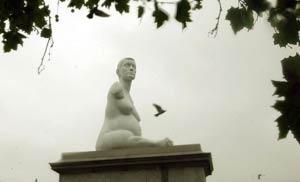
Britain
September 15, 2005
'Alison Lapper Pregnant' has been described as 'rather repellent' by one critic (John Stillwell/PA)
Disabled artist hopes plinth statue will shock By Sam Knight, Times Online
Thirteen feet high and carved from a single piece of white marble, the statue of pregnant, disabled woman becomes the latest work of art to stand on Trafalgar Square's empty plinth today.
NI_MPU('middle'); Alison Lapper Pregnant, which is modelled on a disabled artist from Brighton who posed for Marc Quinn, the sculptor, when she was eight months pregnant, will be unveiled by Ken Livingstone, the Mayor of London, this afternoon.
Ms Lapper, who was born with shortened legs and no arms because of a congenital disorder, has travelled to London for the ceremony. "I'm very excited about it. This is history in the making," she said.
"Never before has someone with a disability - let alone someone with a disability who is naked and eight months pregnant - been put in such a public place and portrayed in such a positive way."
Ms Lapper acknowledged the strong, positive reactions that the statue has drawn. Greg Hilty, director of visual arts and literature at Arts Council England, London has celebrated the work for its consideration of "idealism, heroism, femininity, prejudice and identity."
While Bert Massie, Chairman of the Disability Rights Commission, said: "I’m extremely proud that one of the most popular tourist attractions in London is displaying a very powerful sculpture of a disabled woman."
Mr Quinn expects the piece to surprise passers-by in London's most famous square: "Hopefully that first shock will draw your attention to the sculpture and then, once it's got under your skin, there will be an emotional response to it," he said.
This morning, critics of the work voiced their dislike for it in careful terms. Robert Simon, editor of the British Art Journal, told BBC News that the statue was "horrible".
"Not because of the subject matter I hasten to add," he said, praising Ms Lapper for her role in the project. "I think she is very brave, very wonderful but it is just a rather repellent artefact - very shiny, slimy surface, machine-made, much too big."
The sculpture, which is made of 13 tonnes of white Carrera marble, will remain on the plinth for 18 months before being replaced by Thomas Schutte’s perspex installation "Hotel for the Birds" in 2007.
Trafalgar Square's fourth plinth was built in 1841 by Sir Charles Barry and was intended to display an equestrian statue.
But a lack of money and agreement over what should stand on it left the plinth empty until July 1999, when Mark Wallinger's Ecce Homo: Behold the Man, a life-size statue of Jesus Christ, became the first of a series of temporary installations in the square.
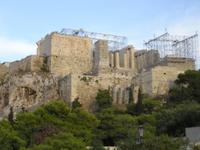
GR:Η ακρόπολη προσβάσιμη!!! Πάνε πάνω από τριάντα χρόνια από τότε που την επισκέφτηκα, μέχρι τα προπύλαια. Με αφορμή τη συμμετοχή μου στο πρόγραμμα του Ossate, (www.ossate.org) είχα την ευκαιρία να την επισκεφθώ καθώς η επίσκεψη στην Ακρόπολη ήταν και η τελική πράξη του αντίστοιχου συνεδρίου που έλαβε χώρα στην Αθήνα στις 8 και 9 Σεπτεμβρίου 2005.
EN:Access to the Acropolis? It has been over thirty years that I visited it only to the Propylaia (the entrance gate). Since the visit to Acropolis was the final event of the ossate workshop at Athens I had the chance to go up there for the first time in my life!

GR Είσοδος, στο τέλος του πεζοδρόμου
EN Entrance at the end of the pedestrian path.
EN Accessible route but sometimes a little difficult to roll on your own.
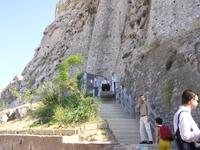
GR Παίρνεις ένα αναβατόριο κλίμακας
EN Then a stair lift
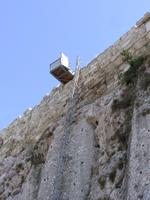
GR Ένας ανελκυστήρας σε πηγαίνει πιο κοντά στον γαλάζιο ουρανό για 25 μέτρα.
EN An elevator takes you closer to the blue sky for 25 meters.

GR Εκεί πάνω, εντέλει
EN Finally up there.
GR:Το κάστρο της Άσσου είναι προσβάσιμο. Οι πρόσφατες ανακαινίσεις του συγκροτήματος των παλαιών φυλακών είναι επισκέψιμες από έναν χειριστή τροχοκαρέκλας όπως εγώ.
EN:The Venetian castle of Assos is accessible, resent innovations took under consideration the needs of a wheelchair user as myself.
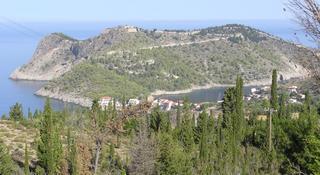
GR: Γενική Άποψη ΕΝ: General View

GR: Μέσα στην αυλή των πρώην φυλακών EN: Inside the ex-prison yard.
(Προσέξτε ότι απεικονίζονται δύο σε αυτή τη φωτό - Notice that there two guys in this photo, guess who's the second)

GR: Η παραλία είναι μερικώς προσβάσιμη, παρόλο το μικρό πλάτος του αιγιαλού είναι απαραίτητη η βοήθεια.
EN: The beach is partially accessible, help is needed. Anyway from the picture anyone has the information to judge on his own.
